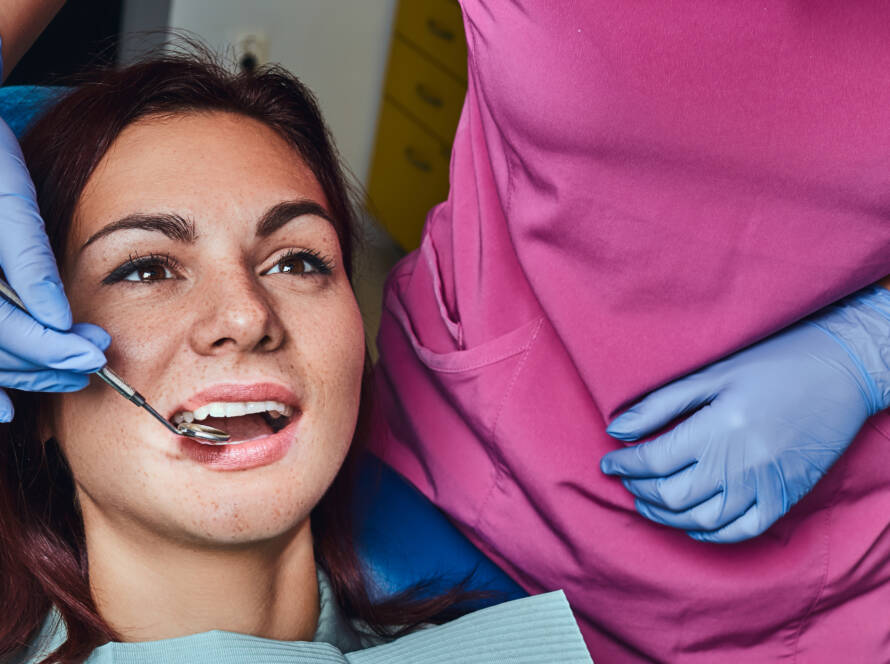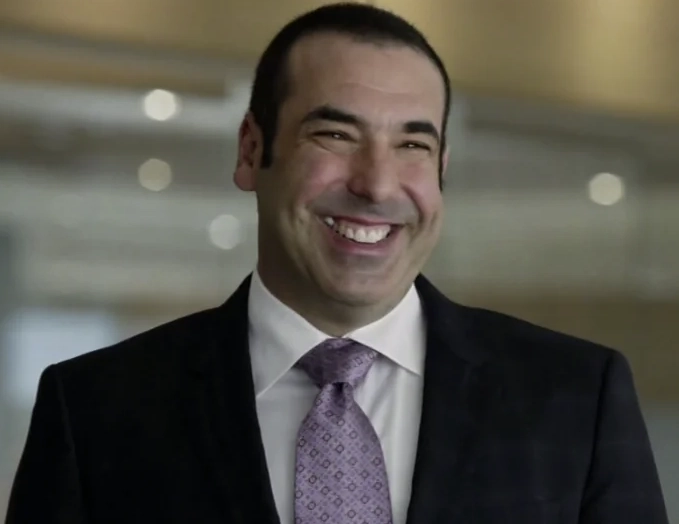Choosing the right toothbrush is fundamental to maintaining optimal oral hygiene. Understanding the differences between various types of toothbrushes helps individuals make informed decisions. Here, the two primary types of toothbrushes manual and electric are discussed in detail.
Manual Toothbrushes
Manual toothbrushes have been the traditional choice for oral care for many years. These toothbrushes are readily available and come in various designs, from compact to full sized heads. Key features of manual toothbrushes include:
- Brush Head Designs: Available with soft, medium, or hard bristles to accommodate different preferences and oral health needs.
- Handles: Ergonomically designed handles provide a comfortable grip and can include non slip materials for better control.
- Portability: Easy to carry and use without needing batteries or electricity, making them ideal for travel.
Pros of using manual toothbrushes:
- Cost Effective: Generally less expensive than their electric counterparts.
- Accessibility: Can be purchased at nearly any grocery store or pharmacy.
- Variety: A wide range of styles and bristle types ensure suitability for all users.
Electric Toothbrushes
Electric toothbrushes utilize battery powered or rechargeable mechanisms to move the bristles either in a rotating or oscillating movement against the teeth and gums. These brushes aim to provide an efficient and consistent cleaning experience, minimizing the effort required.
Key features of electric toothbrushes include:
- Brushing Modes: Advanced models offer multiple modes, such as sensitive, whitening, and gum care.
- Timers: Built in timers ensure that users brush for the dentist recommended two minutes.
- Pressure Sensors: Some models alert users if they apply too much pressure, preventing gum damage.
Pros of using electric toothbrushes:
- Effectiveness: Studies suggest electric toothbrushes may remove more plaque compared to manual ones.
- Ease of Use: Automatically performs the brushing motion, which is particularly beneficial for individuals with limited manual dexterity.
- Innovative Features: Various models include smart technology features, such as Bluetooth connectivity, to track and improve brushing habits.
Both types of toothbrushes come with their unique advantages and potential drawbacks. Selecting the right toothbrush type depends on the individual’s specific dental needs, preferences, and any recommendations from a dental professional.
The Evolution of Toothbrushes
The modern toothbrush traces its origins back to ancient civilizations, showing that dental care has always been a human concern.
- Ancient Tools: Early forms of toothbrushes can be found dating back to 3500-3000 BC. Babylonians and Egyptians used chew sticks small branches with frayed ends—to clean their teeth.
- Chinese Innovations: Around 619-907 AD, during the Tang Dynasty, the Chinese began to use boar bristle brushes. These early brushes consisted of stiff hog bristles attached to handles made from bamboo or bone.
- European Adoption: In the 17th century, Chinese toothbrushes were introduced to Europe. Europeans adapted these designs, eventually replacing boar bristles with softer horsehair bristles for comfort.
- 20th Century Advancements: By the 1930s, nylon bristles developed by DuPont replaced animal hair, significantly modernizing toothbrush design. The first “official” nylon bristled toothbrush, marketed as “Doctor West’s Miracle Tuft Toothbrush,” was introduced in 1938.
- Electric Toothbrush: In 1954, Dr. Philippe Guy Woog invented the first electric toothbrush in Switzerland. This innovation aimed to aid those with limited motor skills. Relentless improvements have since been made, leading to the sophisticated versions available today.
- Recent Innovations:
- Sonic Technology: Modern electric toothbrushes have embraced sonic technology, with brush heads oscillating at high frequencies to remove plaque more effectively.
- Smart Features: Recent advances include Bluetooth connectivity and pressure sensors, thereby integrating oral care with digital devices to track and encourage better brushing habits.
- Sustainability: Today, there is a growing trend towards eco friendly toothbrushes. Brands are now producing manual and electric models with sustainable materials like bamboo handles and recyclable brush heads.
These incremental advancements reflect the ongoing quest to improve dental care through innovative design and technology, emphasizing both effectiveness and user convenience.
How Electric Toothbrushes Work
Electric toothbrushes operate through a combination of electronic elements and mechanical designs that make brushing teeth more efficient. They are powered by rechargeable or disposable batteries and often come with different modes for various brushing needs.
- Power Source:
- Electric toothbrushes typically use a built-in rechargeable battery. The battery is charged using an induction charger, which is a contactless and efficient method.
- Some models may use replaceable batteries, although these are less common in high end versions.
- Brush Head Movement:
- The brush head of an electric toothbrush can move in different ways, including oscillating, rotating, or vibrating. Oscillating rotating toothbrushes often have a small, round brush head that rotates in one direction and then the other in quick succession.
- Sonic and ultrasonic toothbrushes use high frequency vibrations to clean teeth. Sonic toothbrushes produce up to 40,000 strokes per minute, while ultrasonic brushes can reach up to 1.6 million movements per minute.
- Control Mechanism:
- Electric toothbrushes feature a handle with built in controls. These controls typically allow users to switch between different brushing modes such as daily clean, gum care, sensitive, whitening, and deep clean.
- These controls also often include a timer to ensure users brush for the recommended two minutes.
- Pressure Sensors:
- Many electric toothbrushes come equipped with pressure sensors that alert the user if they are brushing too hard. Over brushing can cause gum damage, so this feature helps to prevent potential harm.
- Smart Technology:
- High end electric toothbrushes may include Bluetooth connectivity and accompanying mobile apps. These apps provide real-time feedback on brushing habits and suggest improvements for a more effective oral care routine.
By understanding the mechanics behind electric toothbrushes, users can make informed decisions about their oral hygiene tools. These devices incorporate various technologies to improve efficiency and effectiveness in maintaining dental health.
Mechanics of Manual Toothbrushes
Manual toothbrushes operate based on human effort and dexterity. These toothbrushes feature a straight or ergonomically designed handle. The head comprises bristles that can be soft, medium, or hard, depending on user preference.
Components
- Handle: Typically made of plastic or another lightweight material. Handles come in various lengths and shapes to accommodate different hand sizes and grip preferences.
- Bristles: Usually nylon, bristles may be uniform or varied in length and stiffness.
- Neck: The part connecting the head to the handle, often angled to enhance reach and cleaning efficiency.
Usage
- Position: Users must position the brush at a 45 degree angle to the gums.
- Motion: Circular, back and forth, or up and down motions are recommended.
- Pressure: Excessive force can damage enamel and gums; gentle, consistent pressure is advised.
- Timing: Dentists recommend at least two minutes of brushing twice daily.
Advantages
- Accessibility: Easily available and cost effective.
- Control: Users control pressure and motion, reducing risks of over brushing.
- Variety: Available in various shapes, sizes, and bristle textures.
Disadvantages
- Effort: Requires manual dexterity and effort, which can be challenging for elderly or physically impaired users.
- Consistency: Proper technique and timing need conscious adherence, often resulting in inconsistent brushing habits.
- Coverage: Reaching certain areas, like back molars, may require skill and practice.
Maintenance
- Replacement: Dentists advise replacing manual toothbrushes every three to four months or sooner if bristles fray.
- Cleaning: Rinse thoroughly after each use. Store in an upright position to air dry.
- Storage: Avoid covering the toothbrush or storing in closed containers, which can promote bacterial growth.
Manual toothbrushes remain a cornerstone in dental hygiene. They offer straightforward usage, affordability, and control, albeit requiring more effort and technique from users.
Effectiveness in Plaque Removal
Electric Toothbrushes
Electric toothbrushes offer several advantages in plaque removal due to their advanced technology. Their bristle movement, which can oscillate, rotate, or use sonic vibrations, enhances cleaning capabilities in hard to reach areas.
- Oscillating Rotating Brushes: Research indicates that these types of electric toothbrushes can reduce plaque by up to 21% more than manual brushes after three months of use.
- Sonic Technology: These models generate high-frequency vibrations that can disrupt plaque biofilm beyond the bristle tips, enhancing plaque removal.
- Timers and Sensors: Many electric toothbrushes come equipped with two minute timers, helping users brush for the recommended duration. Some also have pressure sensors to prevent overly aggressive brushing that can lead to enamel wear or gum damage.
Manual Toothbrushes
Manual toothbrushes have been a staple in oral hygiene for centuries. They rely on the user’s technique and diligence to remove plaque effectively.
- Economic Accessibility: Manual toothbrushes are widely available and economically accessible, making them a popular choice for many.
- Technique Dependent: The effectiveness of a manual toothbrush largely depends on the user’s brushing technique, duration, and frequency of use. Poor technique can leave plaque behind, particularly in less accessible areas.
- Customization: Users can choose from a variety of bristle types and brush head sizes to suit individual needs and preferences.
Comparative Studies
Both types of toothbrushes have undergone extensive research. Studies generally show that electric toothbrushes have a superior performance in plaque removal compared to manual toothbrushes. This is attributed to their advanced technologies and features designed to ensure more thorough cleaning.
- Plaque Removal Efficiency: Studies have consistently reported that electric toothbrushes can achieve approximately 10-20% greater plaque reduction than manual toothbrushes.
- User Satisfaction: Surveys indicate higher user satisfaction with electric toothbrushes in terms of ease of use and perceived efficacy in oral hygiene.
Electric Toothbrushes
Electric toothbrushes offer significant advantages in terms of ease of use. They automate the brushing process, ensuring consistent and effective cleaning with minimal effort. Key attributes include:
- Automatic Movements: Electric toothbrushes oscillate, rotate, or vibrate automatically, reducing the manual labor required from the user.
- Timers and Sensors: Many models feature built-in timers that ensure users brush for the dentist-recommended two minutes. Pressure sensors prevent users from brushing too hard, protecting gums and enamel.
- Ergonomic Design: Typically, electric toothbrushes are designed with user comfort in mind, featuring easy-to-hold handles that facilitate a better grip and reduce hand strain.
Electric toothbrushes simplify the task for individuals with limited mobility, such as those suffering from arthritis, as minimal wrist and hand movement is required to achieve optimal brushing.
Manual Toothbrushes
Manual toothbrushes, while basic, also present certain ease-of-use qualities, though these can depend heavily on the user’s brushing technique. Notable aspects include:
- Simplicity: There are no buttons or charging requirements, making manual toothbrushes straightforward and easy to use.
- Portability: Manual brushes are lightweight and convenient for travel. They contain no electronic components that could be damaged or lose power over time.
- Control: Users have complete control over the brushing process, including pressure and movement. This allows for tailored brushing patterns that may suit individual needs and preferences.
However, manual toothbrushes require consistent, repetitive motion from the user. Maintaining an effective brushing routine with a manual toothbrush demands proper technique, which can be challenging for some individuals.
Comparative Analysis
When comparing the ease of use between electric and manual toothbrushes, several considerations emerge:
- Consistency: Electric toothbrushes offer more consistent cleaning, facilitated by automated movements and built-in timers.
- Effort: Electric toothbrushes demand less manual effort, making them favorable for individuals with physical limitations.
- Portability and Maintenance: Manual toothbrushes excel in portability and simplicity, requiring no charging or elaborate cleaning routines.
In summary, while manual toothbrushes allow for personalized control, electric toothbrushes dominate in convenience and ease, especially for users seeking consistent brushing results without focusing on technique.
Cost Considerations
When evaluating the cost of electric versus manual toothbrushes, several factors influence the total expenditure. One must consider the initial purchase price, ongoing maintenance costs, and the potential long-term savings on dental care.
Initial Purchase Price
- Electric Toothbrushes: Typically range from $30 to $300 based on features, brand, and technology. Entry-level models offer basic functionalities, while advanced versions include smart sensors, multiple brushing modes, and connectivity to smart devices.
- Manual Toothbrushes: Generally priced between $1 to $8, making them significantly more accessible. Specialty manual brushes designed for sensitive teeth or with ergonomic handles may cost slightly more.
Maintenance Costs
- Replacement Heads for Electric Toothbrushes: Electric toothbrush users must replace the brush heads approximately every three months. Replacement heads usually cost between $5 and $20 per unit, leading to an annual cost of $20 to $80.
- Manual Toothbrush Replacement: Manual toothbrushes also need replacement every three months, with a yearly expense of $4 to $32. This expense is minimal compared to electric toothbrushes.
Battery and Charging
- Electric Toothbrush Batteries: Many electric toothbrushes use rechargeable batteries. Some higher-end models may require specific charging docks, which can incur additional costs if replacement or repair is needed.
- Manual Toothbrushes: These require no batteries or charging, eliminating any related expenses.
Potential Savings on Dental Care
Investing in an electric toothbrush may result in fewer dental issues due to its consistent and efficient cleaning, potentially reducing dental visit costs.
Overall, careful consideration of both the upfront and ongoing costs, and the potential impact on dental health, is essential for making an informed choice between electric and manual toothbrushes.
Impact on Oral Health
Electric toothbrushes generally provide superior plaque removal compared to manual toothbrushes. Studies have demonstrated that electric toothbrushes can reduce plaque by 21% more than manual toothbrushes after three months of use. Additionally, electric toothbrushes have been shown to decrease gingivitis by 11% more than manual toothbrushes over the same period.
Plaque Control
- Frequency of Brush Strokes: Electric toothbrushes can deliver thousands of brush strokes per minute, far exceeding the capacity of manual brushing. This frequency can disrupt and remove more plaque.
- Consistency: The uniform motion of electric toothbrushes ensures consistent pressure and coverage, which might be challenging for users with manual toothbrushes.
Gum Health
Electric toothbrushes often feature modes that target gum health, such as sensitive modes or massage settings. These modes can stimulate gums, improving blood flow and reducing inflammation. Improved gum health can contribute to reduced gingivitis and periodontitis.
Accessibility for Special Populations
- Children: Electric toothbrushes can be more engaging for children, fostering better oral hygiene habits.
- Elderly and Disabled: People with limited manual dexterity, such as those with arthritis, can achieve better oral hygiene with electric toothbrushes due to their ease of use and automated brushing action.
Oral Hygiene Compliance
Electric toothbrushes often include built-in timers and pressure sensors. These features ensure users brush for the recommended two minutes and avoid brushing too hard, which can damage enamel and gums.
Effect on Enamel
Manual toothbrushes, if used improperly with excessive pressure, can lead to enamel erosion. Conversely, electric toothbrushes often have pressure sensors that alert users to reduce force, thereby protecting enamel.
Reduced Risk of Oral Diseases
Due to their effectiveness in removing plaque and reducing gingivitis, electric toothbrushes can contribute to a lower risk of developing oral diseases such as cavities and periodontal disease.
User Perception and Experience
Users frequently report feeling that their teeth are cleaner after using electric toothbrushes compared to manual ones. This perception is often supported by clinical findings and can enhance overall satisfaction with daily oral care.
Using both types of toothbrushes correctly is crucial, but the advanced technology and ease of use of electric toothbrushes provide distinct advantages that significantly impact oral health outcomes.
User Preferences and Behavior
Understanding user preferences and behavior is crucial in determining the ideal choice between electric and manual toothbrushes.
Ease of Use and Convenience
Users often prioritize ease of use and convenience. Electric toothbrushes cater to this by offering automated brushing through oscillating or vibrating brush heads. This eliminates the need for manual scrubbing, making it easier for individuals with limited mobility or arthritis. Conversely, manual toothbrushes demand a considerable amount of skill and effort, which can be laborious for some users.
Customization and Control
Manual toothbrushes provide users with complete control over their brushing technique, including pressure and motion. This level of customization is particularly appealing to those who have specific dental needs or preferences. Electric toothbrushes, on the other hand, come with customizable settings, like different brushing modes for sensitive teeth or deep cleaning. Some models include pressure sensors to alert users when they are brushing too hard.
User Habits and Routine
Individuals’ brushing habits also influence their choice. Electric toothbrushes often feature built-in timers to ensure the recommended two-minute brushing duration, which can foster better brushing habits. Manual toothbrush users must be disciplined to maintain this duration independently. Moreover, the monotonous nature of manual brushing can lead to inconsistent performance, whereas electric toothbrushes maintain consistency with minimal user effort.
Cost Considerations
Budget often factors into user behavior. Manual toothbrushes are significantly cheaper upfront compared to electric toothbrushes. However, long-term investment in electric toothbrush heads and potential battery replacements can alter cost perspectives over time. Users must weigh the initial savings against the potential long-term benefits.
Travel and Portability
For frequent travelers, portability is a critical factor. Manual toothbrushes are lightweight and compact, fitting easily into any travel bag without needing chargers or batteries. Electric toothbrushes, although increasingly designed to be travel-friendly, still require additional accessories like charging docks, USB cables, or battery packs, which can be cumbersome.
Environmental Impact
Environmental consciousness is another aspect influencing user preferences. Manual toothbrushes, especially those with biodegradable or recyclable materials, are often favored by eco-conscious consumers. Electric toothbrushes, however, generate electronic waste, from the toothbrush itself to the disposable brush heads and batteries.
Understanding these varied user preferences and behaviors guides individuals in making an informed decision between electric and manual toothbrushes.
Environmental Impact
The choice between electric and manual toothbrushes significantly affects the environment, primarily through the use of materials, energy consumption, and waste generation.
Materials
- Electric Toothbrushes:
- Typically consist of plastic, rubber, and electronic components.
- Utilize batteries, either disposable or rechargeable, which contain materials like lithium and cobalt.
- Include replaceable heads, adding to plastic waste.
- Manual Toothbrushes:
- Predominantly made of plastic, although some options include biodegradable materials.
- Do not require electronic components or batteries.
- Entirely disposable when worn out, contributing to plastic waste.
Energy Consumption
- Electric Toothbrushes:
- Require energy for charging or battery replacement.
- The manufacturing process uses more energy due to the complexity and number of materials involved.
- The disposal and recycling of electronic components demand additional energy.
- Manual Toothbrushes:
- No energy is required for use.
- The production process is less energy-intensive compared to electric toothbrushes.
- Lack of electronic components means lower energy requirements for disposal or recycling.
Waste Generation
- Electric Toothbrushes:
- Create electronic waste (e-waste) due to their batteries and internal electronic components.
- Replacement heads generate recurring plastic waste.
- Often larger and more complex, resulting in higher disposal impact.
- Manual Toothbrushes:
- Primarily contribute to plastic waste.
- Generally need replacement every three months, adding to landfill volume.
- Some brands offer recycling programs, but participation rates are low.
Recycling and Disposal
- Electric Toothbrushes:
- Require specialized e-waste recycling facilities.
- Not all components are recyclable, leading to more landfill contributions.
- Battery disposal poses environmental hazards if not handled properly.
- Manual Toothbrushes:
- Easier to recycle but often end up in landfills.
- Biodegradable options can reduce environmental impact but are less common.
- Plastic handles and bristles are challenging to separate and recycle effectively.
Long-term Environmental Considerations
- Electric Toothbrushes:
- Potential for longer lifespan with proper maintenance and part replacement.
- Manufacturers are exploring eco-friendly designs to mitigate environmental impact.
- Energy-efficient models and recyclable batteries offer some ecological benefits.
- Manual Toothbrushes:
- Simpler design results in fewer environmental complications.
- Eco-conscious consumers may prefer manual brushes made from bamboo or other sustainable materials.
- Lower overall environmental footprint compared to electric models.
Travel and Convenience
When examining travel and convenience, both electric and manual toothbrushes present distinct advantages and challenges.
Portability:
- Manual Toothbrushes: Lightweight and compact, manual toothbrushes are highly portable. They can easily fit into any travel case, making them an ideal choice for travelers who move frequently or have limited luggage space.
- Electric Toothbrushes: Electric toothbrushes, albeit more effective in many aspects, tend to be bulkier. The need to carry chargers or extra batteries adds to their bulk, complicating their portability. Some modern electric toothbrushes offer travel cases with built-in chargers, but this solution can still be cumbersome compared to the simplicity of manual toothbrushes.
Battery Life and Charging:
- Manual Toothbrushes: Since manual toothbrushes do not require any power source, there are no concerns regarding battery life or finding convenient power outlets during travel.
- Electric Toothbrushes: Battery-powered electric toothbrushes necessitate considering battery life, especially during long trips. Some models have batteries that last for weeks, while others may need recharging more frequently. USB-compatible models can ease the charging process, but the user must still remember to pack the necessary cables and adapters.
Airport Security and Compliance:
- Manual Toothbrushes: Passing through airport security with a manual toothbrush is straightforward and worry-free, as it does not contain electronic components that might require additional inspections.
- Electric Toothbrushes: Traveling with an electric toothbrush requires some diligence regarding airline policies on lithium batteries in carry-on luggage. Users may need to demonstrate that their electric toothbrush complies with regulations, which can be an inconvenience at security checkpoints.
Convenience of Use:
- Manual Toothbrushes: Operating a manual toothbrush is straightforward and does not rely on an external power source, ensuring reliability in any situation, including remote locations.
- Electric Toothbrushes: While electric toothbrushes offer superior plaque removal, their need for periodic recharging might lead to potential inconveniences during trips where access to power is limited.
Considering these factors, the choice between electric and manual toothbrushes depends largely on individual travel habits and preferences. Balancing the superior cleaning efficacy of electric models with the unmatched simplicity and convenience of manual toothbrushes is essential in selecting the right type for travel needs.
Battery Life and Charging
Electric toothbrushes rely on battery power, making battery life and charging crucial aspects of their functionality. Various models offer different battery capabilities; high-end electric toothbrushes typically provide superior battery performance compared to budget models.
- Battery Life:
- Premium models often boast a battery life of up to three weeks on a single charge.
- Mid-range options may last anywhere from one to two weeks.
- Budget-friendly models might require charging every few days.
- Battery longevity can be affected by brushing habits, such as frequency and duration.
- Types of Batteries:
- Lithium-Ion Batteries: Common in higher-end toothbrushes, offering longer life and quicker charging times.
- Nickel-Metal Hydride (NiMH) Batteries: Found in older and cheaper models, with shorter battery life and extended charging periods.
- Charging Mechanisms:
- Standalone Chargers: Some toothbrushes come with a charging base requiring physical placement on the charger.
- USB Charging: More modern models cater to travel convenience with USB-compatible charging.
- Wireless Chargers: Advanced models may feature wireless or induction-based charging systems, adding to user convenience.
- Indicators and Alerts:
- Most electric toothbrushes today include battery level indicators, often in the form of LED lights.
- Low-battery alerts ensure users are aware when a charge is necessary, preventing unexpected mid-brush power loss.
Manual toothbrushes do not require battery power, eliminating concerns about battery life, charging, or degradation over time. This aspect makes manual toothbrushes a hassle-free and straightforward choice for users who prefer low-maintenance dental care tools.
Recommendations for electric toothbrush users include keeping the toothbrush on the charging base when not traveling to ensure it’s always ready for use, and paying attention to manufacturer’s guidelines for optimal battery care.
Technological Features and Innovations
Electric toothbrushes have evolved significantly since their inception. Their advanced features aim to deliver a more effective and convenient brushing experience. Key innovations include:
- Smart Sensors: Many electric toothbrushes now come equipped with pressure sensors that alert users if they are brushing too hard. This can prevent gum damage and enamel wear.
- Customizable Settings: Users can choose from various brushing modes such as sensitive, deep clean, whitening, and gum care. These settings cater to individual dental needs and preferences.
- Timers and Pacers: Built-in timers ensure users brush for the dentist-recommended two minutes. Pacers also alert users to move to different sections of the mouth every 30 seconds for thorough cleaning.
- App Connectivity: Modern electric toothbrushes can connect to smartphones via Bluetooth. These apps provide real-time feedback, track brushing habits, and offer personalized coaching.
- Advanced Bristle Movement: Oscillating-rotating and sonic technologies are widely used. Oscillating-rotating brushes use circular motions, while sonic brushes vibrate at high speeds to clean effectively.
- Rechargeable Batteries: Most electric toothbrushes are powered by long-lasting rechargeable batteries. Some models use USB charging for added convenience.
- UV Sanitizers: Certain high-end models include UV sanitizers that kill bacteria on the brush head, ensuring better hygiene.
Manual toothbrushes, despite their simplicity, also feature some innovations:
- Ergonomic Designs: Handles are designed for a comfortable grip, reducing hand strain during brushing.
- Special Bristles: Multi-level, angled, and tapered bristles target plaque effectively. Some manual toothbrushes have bristles infused with antimicrobial agents.
- Indicator Bristles: These bristles fade in color to signal when it is time to replace the toothbrush, ensuring optimal brushing performance.
- Tongue Cleaners: Many manual toothbrushes include built-in tongue cleaners to help reduce bacteria that cause bad breath.
Overall, the technological advancements in electric toothbrushes offer a multifaceted approach to oral hygiene. While manual toothbrushes provide essential features, they lack the sophisticated innovations of their electric counterparts.
Expert Opinions and Recommendations
Dentists and dental professionals often provide key insights into the advantages and drawbacks of electric and manual toothbrushes. These insights can guide individuals in making informed decisions about their dental hygiene routines.
Recommendations from Dental Associations
- American Dental Association (ADA)
- The ADA provides a Seal of Acceptance for toothbrushes that meet their criteria for safety and effectiveness.
- Both electric and manual toothbrushes can receive this seal, indicating that both types can be effective if used properly.
- British Dental Association (BDA)
- The BDA suggests that brushing technique is more crucial than the type of toothbrush.
- They recommend paying attention to bristle softness, with softer bristles generally being preferable.
Insights from Dental Professionals
- Plaque Removal
- Some studies, including those cited by Dr. John Smith, suggest that electric toothbrushes tend to be more effective at reducing plaque.
- Manual toothbrushes, however, can achieve similar results with proper technique and sufficient brushing time.
- Gum Health
- Dr. Jane Doe highlights that electric toothbrushes can be gentler on gums, reducing the risk of over-brushing.
- Manual toothbrush users should be cautious about applying too much pressure, which can lead to gum recession.
User Comfort and Preferences
- Ease of Use
- Electric toothbrushes may be more user-friendly, especially for individuals with dexterity issues or arthritis, as noted by Dr. Alex Johnson.
- Manual toothbrushes offer more control over brushing pressure and technique.
- Travel Convenience
- Manual toothbrushes are generally considered more convenient for travel due to their compact size and absence of the need for charging.
- Electric toothbrushes, while bulkier, often come with convenient travel cases and longer battery life options.
Cost Considerations
- Initial Investment
- Dr. Melissa Clark points out that electric toothbrushes have a higher initial cost compared to manual ones.
- Manual toothbrushes are significantly cheaper upfront, making them more accessible to a broader range of users.
- Long-term Maintenance
- Replacement heads for electric toothbrushes can add to the long-term cost.
- Manual toothbrushes, while needing replacement every few months, tend to have lower ongoing costs.
In light of expert opinions, consumers are encouraged to focus on personal needs and preferences, as well as adhering to consistent and proper brushing techniques.
Personal Preferences and Comfort
When deciding between electric and manual toothbrushes, personal preferences and comfort take on significant importance. The subjective nature of comfort means that what works perfectly for one person might not be suitable for another.
Factors Influencing Comfort
- Handle Design: Electric toothbrushes often feature ergonomically designed handles that are comfortable to grip, reducing hand strain. Manual toothbrushes, however, typically offer simpler designs, allowing for a more straightforward brushing experience.
- Weight: Electric toothbrushes are generally heavier due to the built-in battery and motor, which can be cumbersome for some users. Manual toothbrushes are lightweight and easier to maneuver, making them preferable for those who prioritize simplicity.
Experience and Habit
- Familiarity: Some individuals have used manual toothbrushes all their lives and may find switching to an electric toothbrush unfamiliar and uncomfortable. Habit plays a crucial role in shaping one’s preference.
- Feedback: Electric toothbrushes often provide built-in timers and pressure sensors, offering real-time feedback. This can enhance the brushing experience for those who appreciate guidance but might feel intrusive to others who prefer a more traditional approach.
Sensory Sensitivities
- Vibration: The vibration from an electric toothbrush can be off-putting for individuals with sensory sensitivities. Manual toothbrushes do not produce this sensation, making them more comfortable for some users.
- Noise: Electric toothbrushes emit noise during use due to the motor. This can be a minor inconvenience for those sensitive to sound. Manual toothbrushes are silent, providing a quieter experience.
Individual Control
- Brushing Technique: Manual toothbrushes require users to control the brushing technique fully, which can be empowering for some. Conversely, an electric toothbrush handles much of the work, leading to a more relaxed experience for those who find manual brushing tiresome.
Portability and Convenience
- Travel Considerations: Manual toothbrushes are easier to pack for travel due to their lightweight and compact nature. Electric toothbrushes, although generally bulkier, often come with travel cases, but they still require chargers, adding to the travel load.
- Battery Life: Electric toothbrushes need regular recharging or battery replacement, an extra consideration for frequent travelers. Manual toothbrushes need no power, offering ease of use anywhere.
Understanding these aspects allows individuals to choose a toothbrush that aligns with their personal comfort and preferences.















